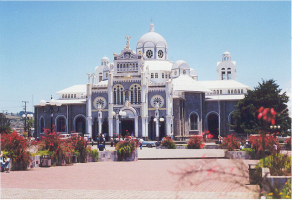Top 5 Most Beautiful Historical Sites in Afghanistan
Afghanistan, a landlocked country in South-Central Asia, is a notable Islamic state. The country has been inhabited since ancient times, as evidenced by the ... read more...presence of extremely old monuments and structures. Afghanistan is an attractive country to visit, especially for history fans, because of its diversified environment and these incredible landmarks. The magnificence of the architecture throughout the country will astound you–it is the consequence of various monarchs who made it their home and erected structures to their liking. The ruling dynasty's tremendous influence may be seen throughout the city. Toplist handpicked the most beautiful historical sites in Afghanistan for your next trip from a lengthy and rather surprising list of attractions.
-
The very first on the list of the most beautiful historical sites in Afghanistan is Herat Citadel. The jaw-dropping Citadel of Alexander in the center of Herat, Afghanistan, dates back to 330 BC. Alexander erected the Citadel of Herat when he arrived in Afghanistan with his army following the Battle of Gaugamela. Later, it was utilized as the headquarters of different empires, and it remained thus for 2,000 years, witnessing considerable destruction and subsequent restoration by the ruling dynasties.
The citadel was excavated and reconstructed by UNESCO in 1976. Several international organizations have agreed to entirely reconstruct it in recent years. It now serves as the home of Herat's National Museum. It is a must-see attraction in Afghanistan because of its historical significance.
Address: Herat, Afghanistan
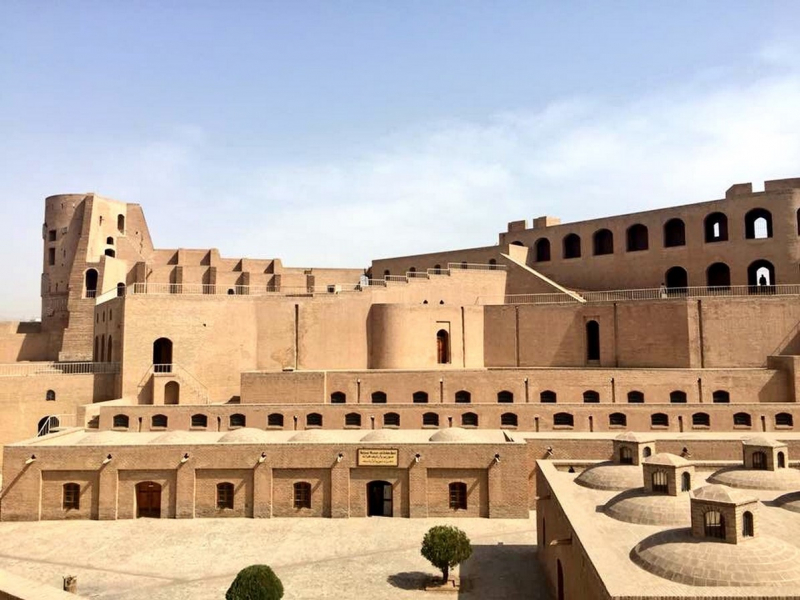
Photo: twitter 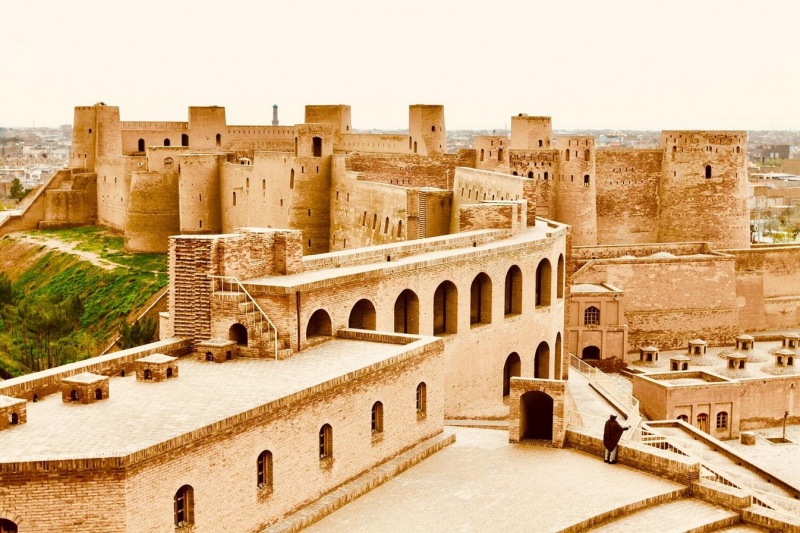
Photo: tripadviser.com -
If you visit Afghanistan's Ghor region, don't miss the Minaret of Jam, a UNESCO World Heritage Site. It is located in the Shahrak District, close to the Hari River. The muezzin is said to have called for prayer from this tower in ancient times. The minaret walls are adorned with geometric patterns, Quran phrases, and alternating bands of Kufic and Naskhi calligraphy. The circular minaret had a lantern and was built on an octagonal foundation with two wooden balconies.
The minar was constructed circa 1190. The minar is noted for its exquisite brick, stucco, and glazed tile design, which is made completely of baked bricks. The minar is 65 meters (216 feet) tall. The minaret is thought to have been built to celebrate the Ghurid dynasty's victory over Prithviraj Chauhan. The octagonal base of the circular minaret. Kufic and nakshi calligraphy, geometric patterns, and Quran passages are among the tile decorations.
Address: Ghor Province, Afghanista
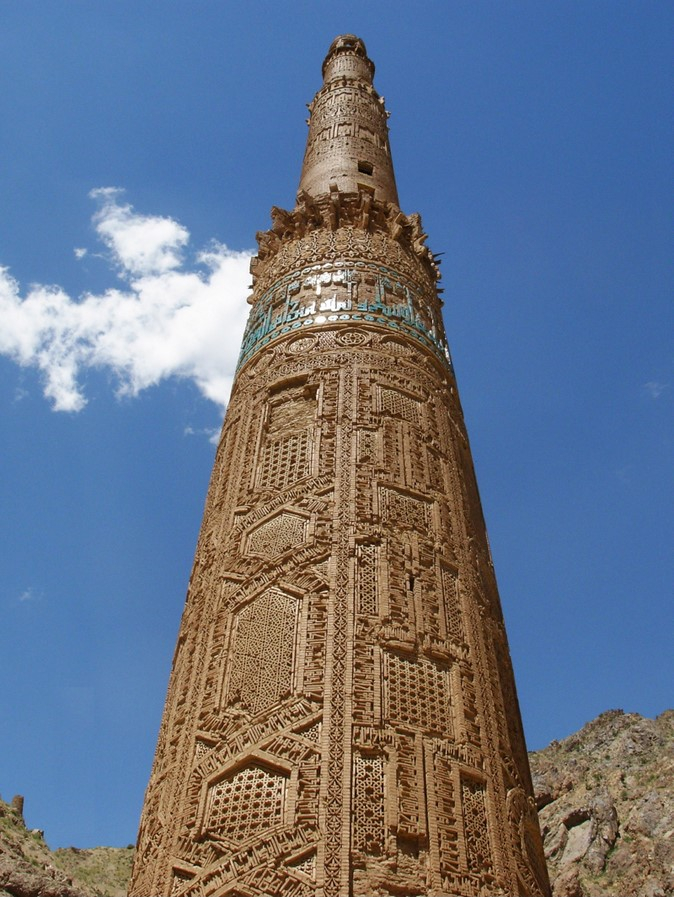
Photo: travelthehimalayas.com 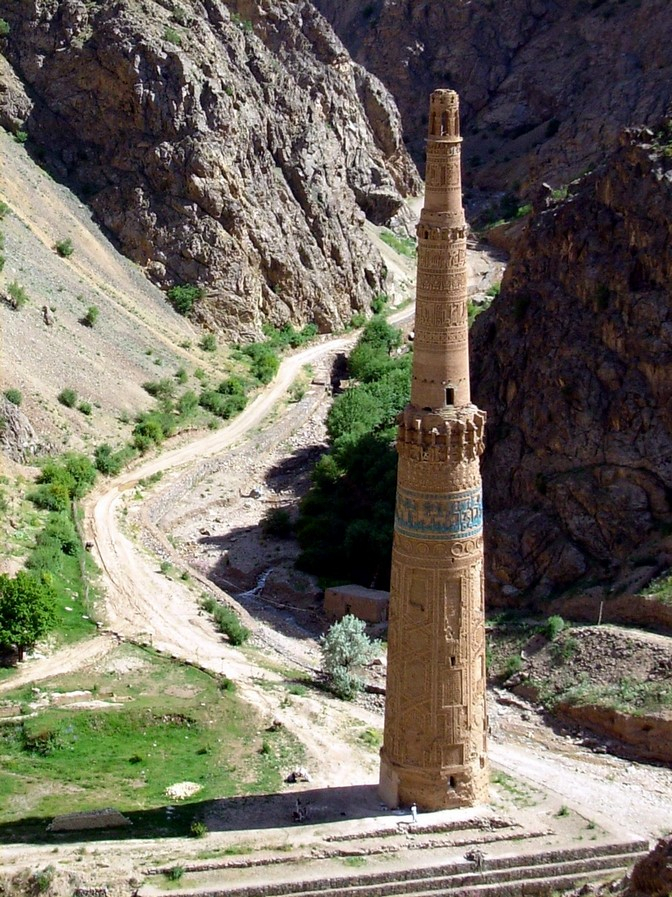
Photo: wikipedia -
The Shrine of Khwaja Abdulla is the final resting place of Sufi saint Khwaja Abdulla Ansari. It was built in 1428 A.D. in the village of Gazur Gah, Herat, Afghanistan. The shrine also has its name on the list of most beautiful historical sites in Afghanistan.
Timurid architectural characteristics can be found throughout the construction. The front has three entrances from the enormous polygonal bay, all of which are decorated in elaborate mosaic work. Despite the splendor of the decoration, the iwan walls were maintained rough. The brickwork is glazed turquoise and black in a chevron pattern and set in a 'banai style.' A window in each of the four recesses on each side illuminates the facade.
Address: Khaja Abdullah Ansari Rd, Herat, Afghanistan
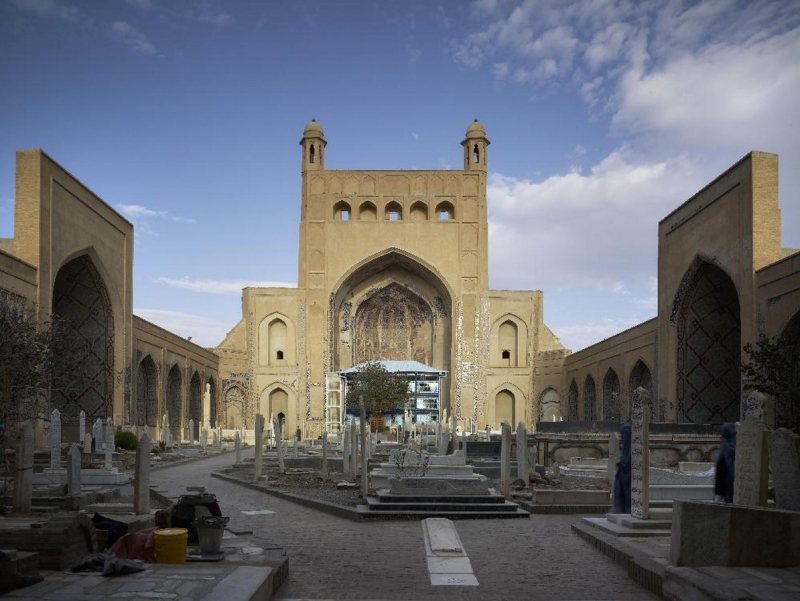
Photo: archnet.org 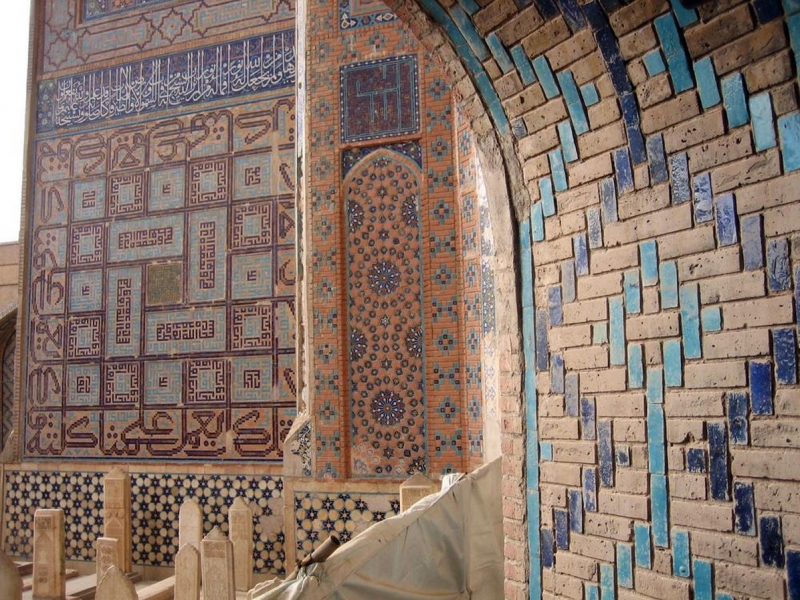
Photo: archnet.org -
Herat's Friday Mosque, which is over 800 years old, is Afghanistan's finest Islamic structure and one of the best in Central Asia. Its vivid colors and meticulous detailing are an ecstatic hymn in the worship of Allah, and it is a master class in the art of tile mosaic.
The lawn on the mosque's eastern side, which leads up to a massive and beautifully tiled façade, is where the majority of people enter. The entrance halls are on each side of this, but they are frequently shut outside of the mosque's major prayer hours, requiring people to enter through the little street door on the mosque's northern wall. The chilly gloom of the entrance corridor gives way to a vibrant starburst of color as you enter the main courtyard, making this a more atmospheric choice. Remember to take off your shoes at this point.
The mosque has four iwans (barrel-vaulted chambers) with arcaded walls surrounding a central courtyard that is nearly 100 meters long. The main iwan is flanked by two massive minarets. Almost every square has a stunning mosaic at the center, encircled by blue bars of Quranic lettering. Only the iwans' plain whitewash gives a hint of modesty. The minarets are dizzying, with their repetitive bands of stylized flowers, arabesques, and geometric designs.
The mosque was designed around 1200 by the Ghorid Sultan Ghiyasuddin. The Ghorids liked plain brick and stucco adornment, so it would have looked rather different at first. The brilliant mosaic was brought by the Timurids when they repaired the mosque in the 15th century, but by the early 20th century, so much of it had been lost that tourists remarked on the mosque's dullness.
The mosque's tile workshop, which has been in operation since the 1940s, is responsible for the beautiful tiling that presently covers the mosque. Although many of the mosaics are based on Timurid originals, the studio has added its own designs, colors, and calligraphy to the mix. One of the gems of current Islamic abstract expressionism is the result of this traditional-meets-modern approach. The workshop is in a courtyard to the left of the main portal entrance in the park; inquire about it at the Ministry of Information, Culture, and Tourism's modest office, which is just inside. The courtyard also has one of the few remaining Ghorid decorations, which has been layered with Timurid tiling, demonstrating the mosque's long history of creative styles. From glazing the raw tiles to setting down the delicate mosaics, the craftsmen are usually eager to show off their work. Taking photos in the mosque is usually not a problem, however, it should be avoided during prayer times. The greatest time to photograph the tiles is in the early morning.
Address: Herat, Afghanistan
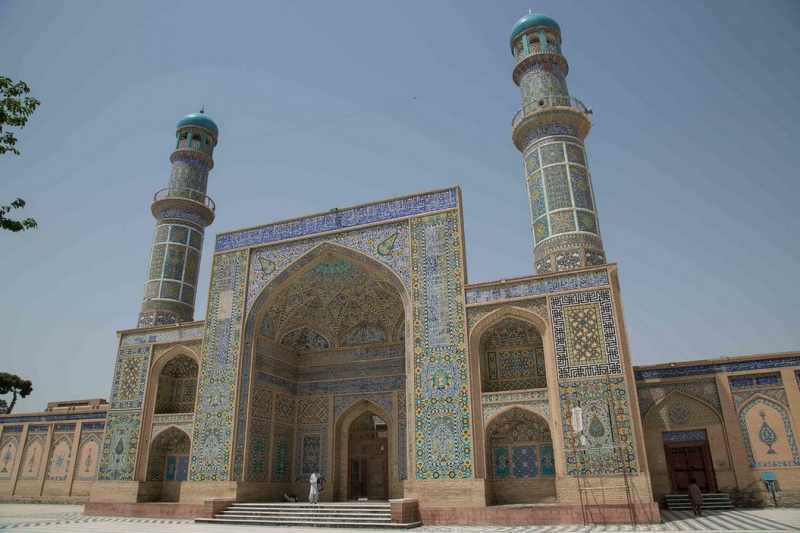
Photo: flicker.com 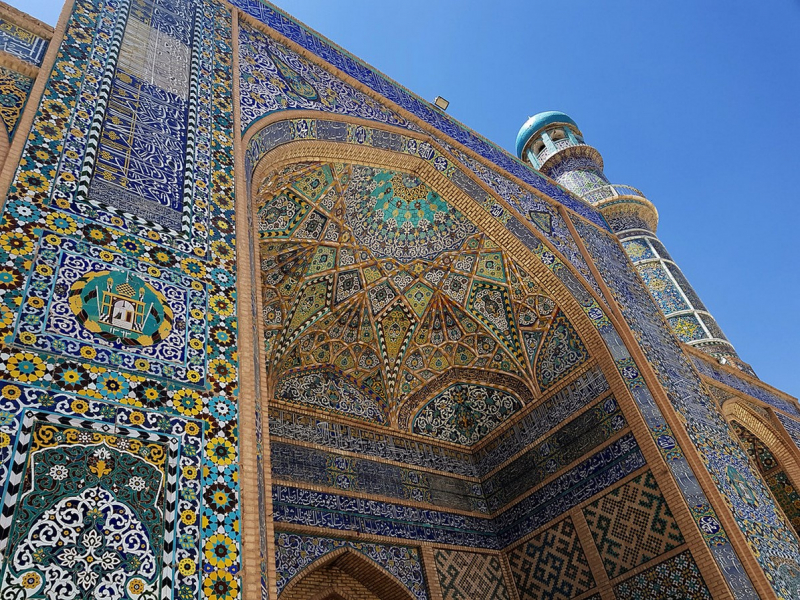
Photo: flicker.com -
Darul Aman Palace was built in the city of Kabul in the year 1927. In the 1920s, King Amanullah Khan began construction on the palace with the goal of modernizing Afghanistan. The palace is a three-story U-shaped structure with 150 rooms. The 33m(108 ft) high mansion was designed by French architects A.Godard and M.Godard, as well as German architects.
The building was aided by German engineer Walter Harten and his team of engineers. The palace is designed in the European neoclassical style.
Address: Kabul, Afghanistan
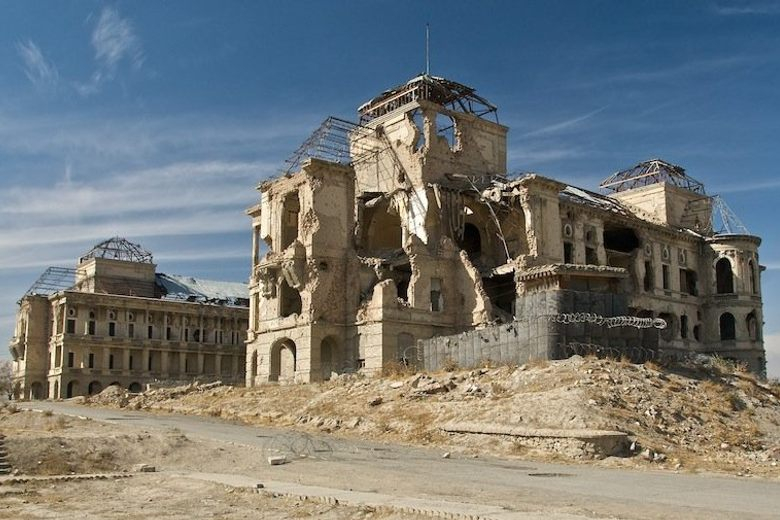
Photo: Atlas Obscura 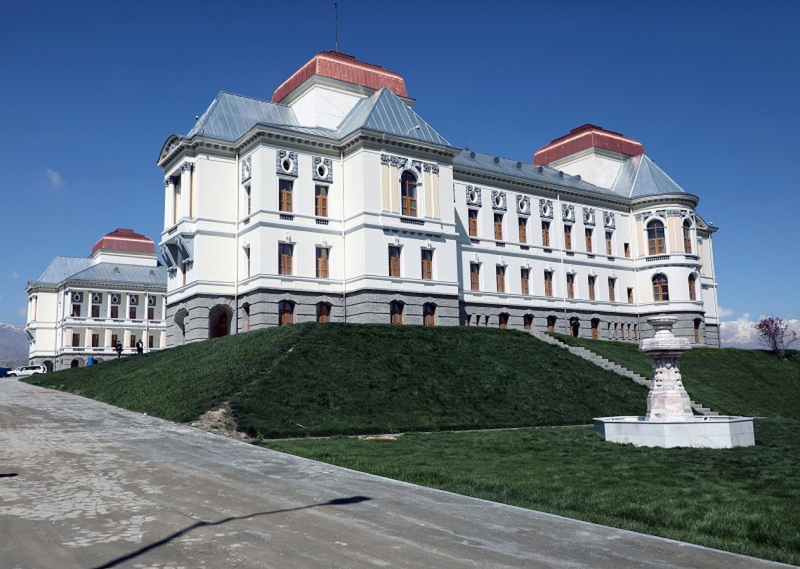
Photo: PJ Photography

























